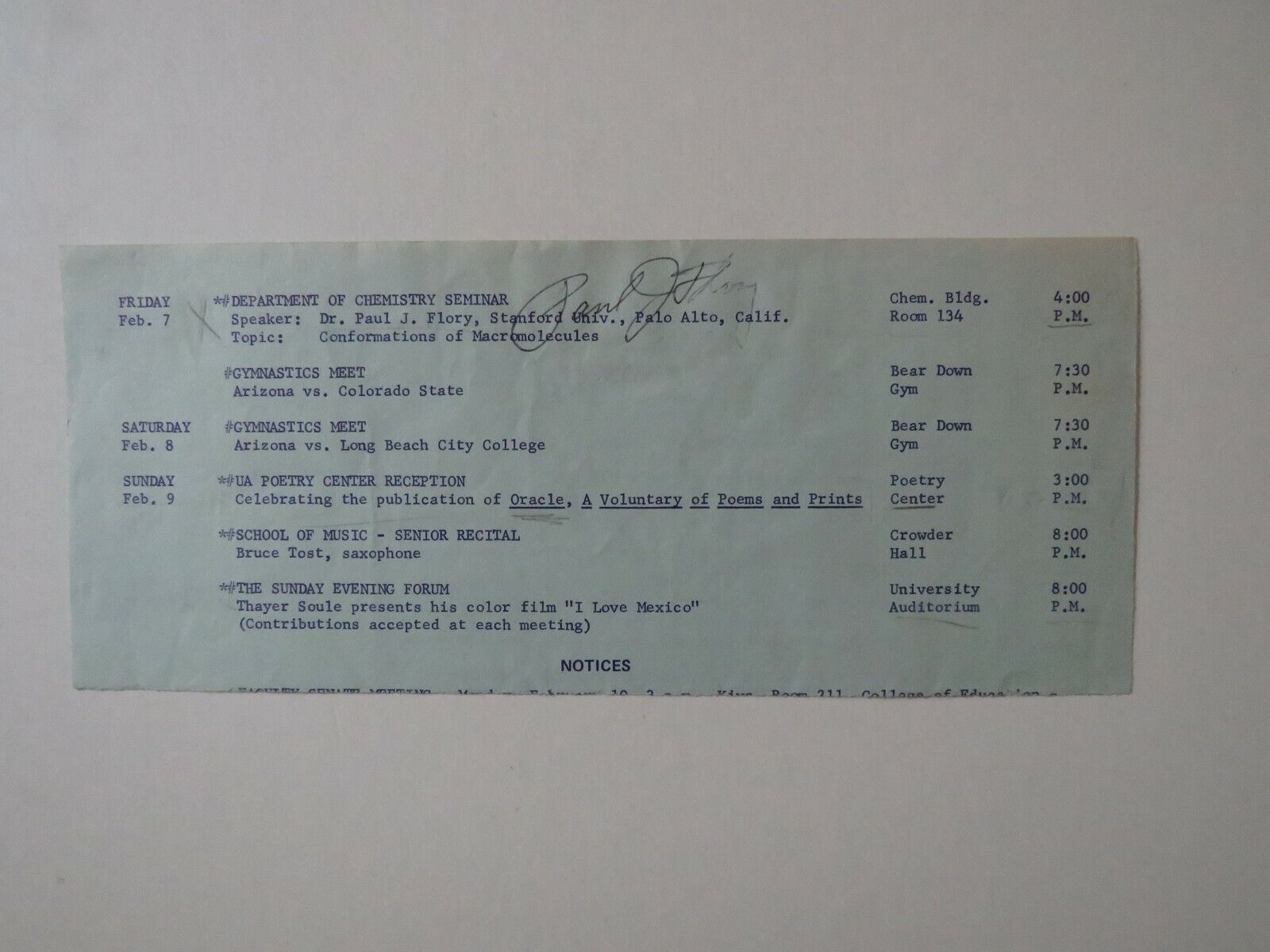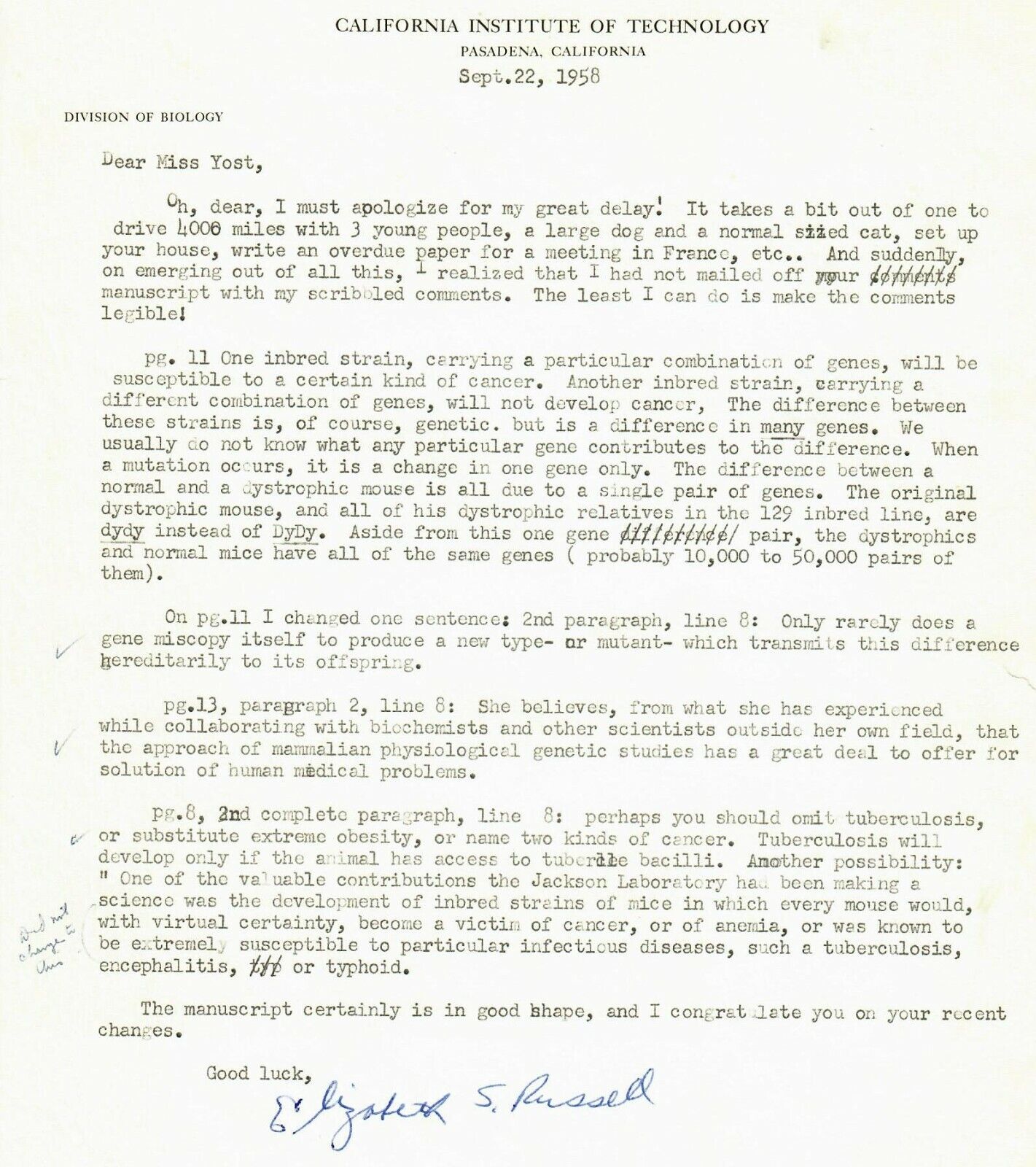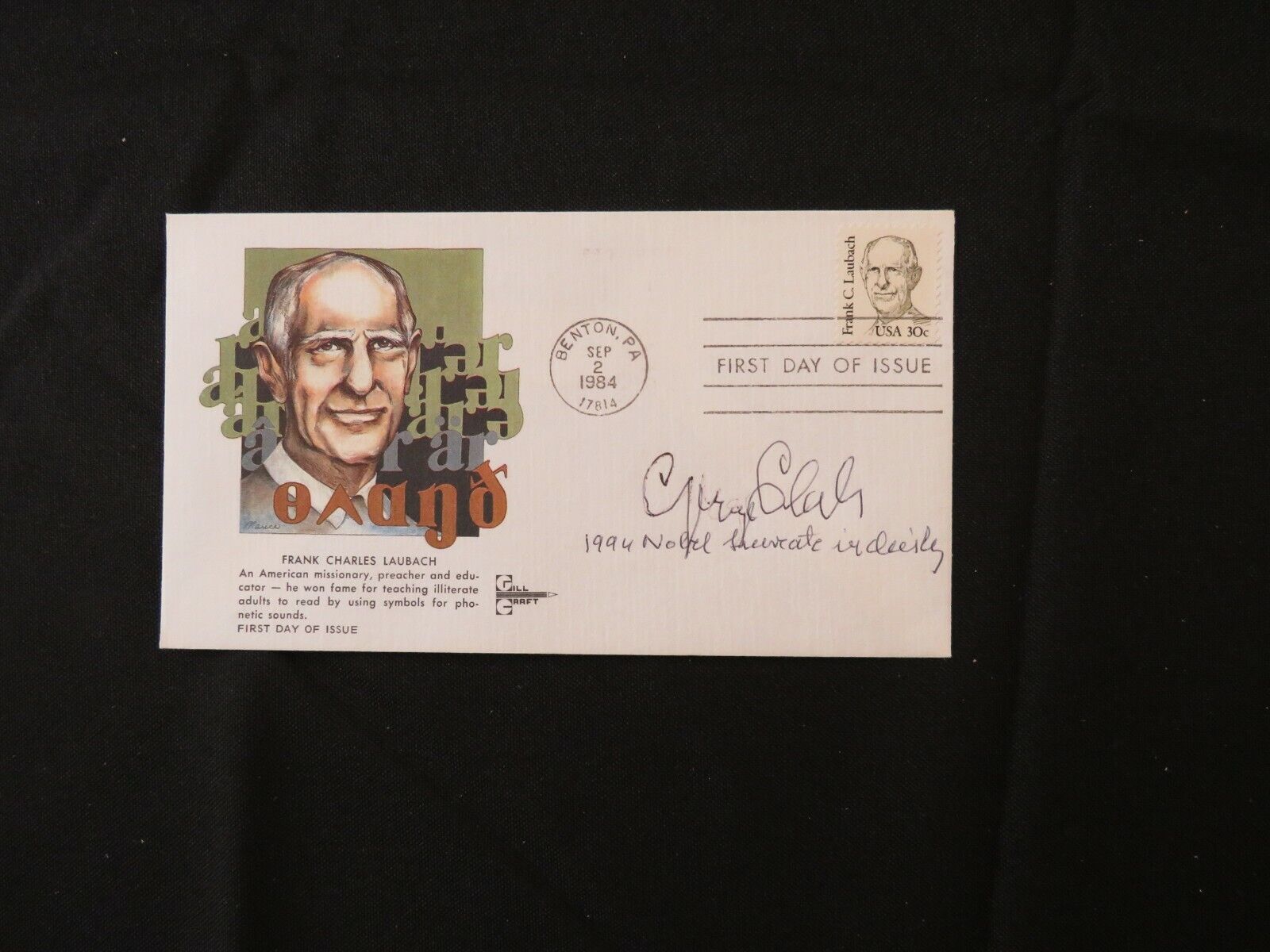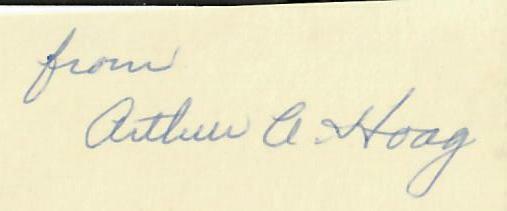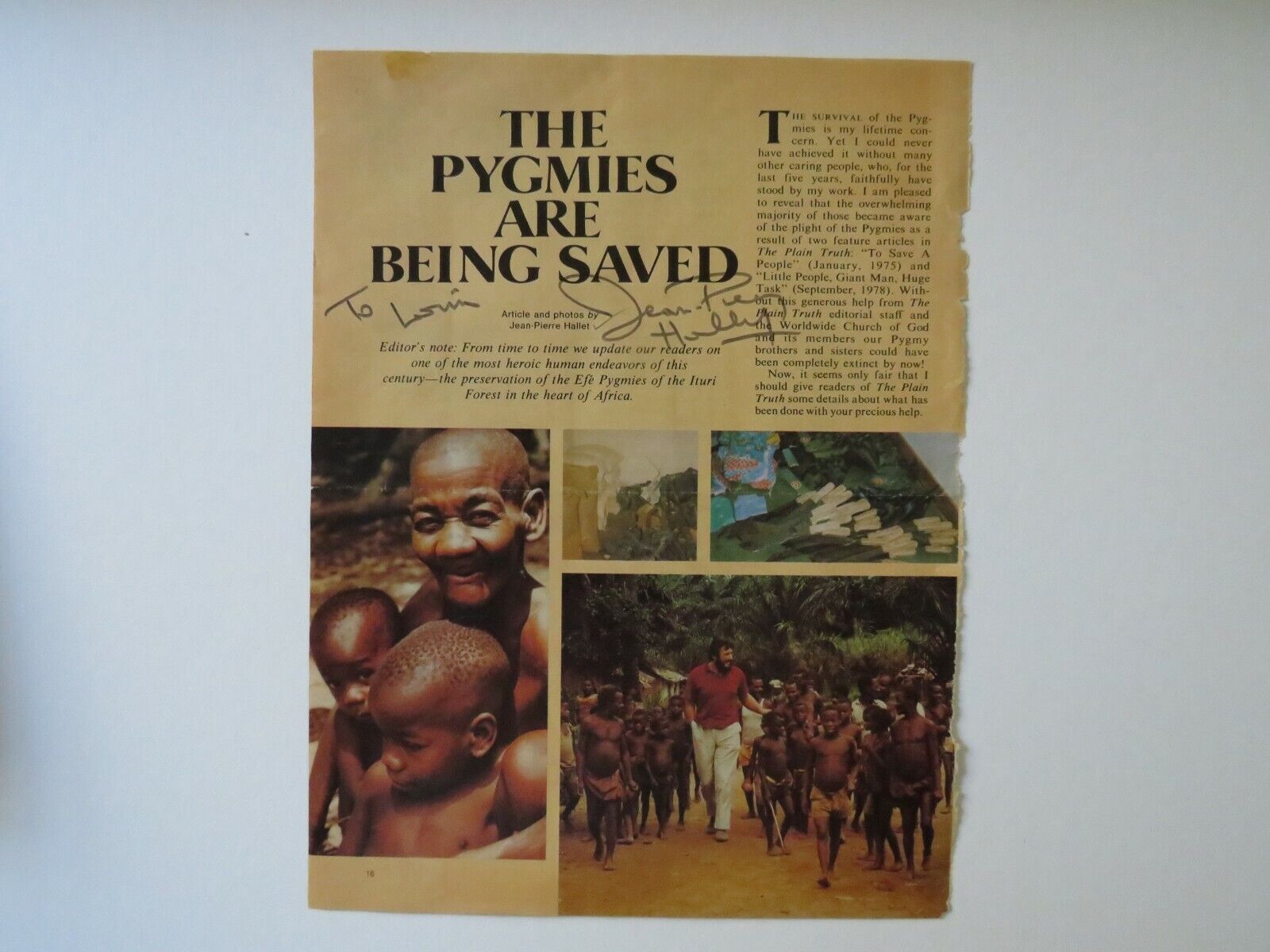-40%
"Nobel Prize in Chemistry" Paul Flory Signed Announcement Todd Mueller COA
$ 52.79
- Description
- Size Guide
Description
Up for auction the"Nobel Prize in Chemistry" Paul Flory Signed Announcement.
This item is certified authentic by Todd Mueller Autographs and comes with their Certificate of Authenticity.
ES-4826E
Paul John Flory
(June 19, 1910 – September 9, 1985) was an American chemist and
Nobel laureate
who was known for his work in the field of
polymers
, or
macromolecules
. He was a leading pioneer in understanding the behavior of
polymers
in solution, and won the
Nobel Prize in Chemistry
in 1974 "for his fundamental achievements, both theoretical and experimental, in the physical chemistry of macromolecules". Born in Sterling, Illinois on June 19, 1910 was scientist Paul Flory. He was raised by Ezra Flory and Nee Martha Brumbaugh. His father worked as a clergyman-educator, and his mother was a school teacher. He first gained his interest in science from Carl W Holl, who was a professor in chemistry. Holl was employed in Indiana at Manchester College as a chemistry professor. In 1936, he married Emily Catherine Tabor. He and Emily had three children together; Susan Springer, Melinda Groom and Paul John Flory jr. They also had four grandchildren. All of his children pursued careers in the field of science. After graduating from
Elgin High School
in
Elgin, Illinois
in 1927, Flory received a bachelor's degree from
Manchester College (Indiana)
(now Manchester University) in 1931 and a Ph.D. from the
Ohio State University
in 1934. His first position was at
DuPont
with
Wallace Carothers
. He was posthumously inducted into the
Alpha Chi Sigma
Hall of Fame in 2002. Flory died on September 8, 1985 due to a massive heart attack. His wife Emily died in 2006 aged 94. Flory attended graduate school at the Ohio State University. He originally entered the University under the major of just physical science. The research for his work included the studies of
photochemistry
and spectroscopy. He completed his Ph.D at Ohio State University in 1934. Durings his studies at Ohio State University, he discovered the understanding that as temperature decreases, the polymer ends up contracting. This leads to the establishment of forces balancing one another's temperature. He ended up with receiving a master's degree in organic chemistry. He received his masters in organic chemistry, rather than physics due to insecurity. After facing his fear, he was able to graduate in 1934 with his doctorate in physical chemistry. While receiving his doctorate, he was supervised by Herriacc Johnston with his thesis on photochemistry of nitric oxide. In 1934, after receiving his Ph.D, he joined the Central Department of Dupont and Company. Throughout this organization he gained an interest in the fundamentals of polymerization and polymeric systems. Flory discovered that polymers that are valid objects of scientific were proved contagious. He proved the hypothesis by Staudinger and Carothers, “polymers are in fact covalently linked macromolecules”.
[6]
After the death of Carother in 1937, Flory was involved for two years at the Research Laboratory located in the University of Cincinnati. During the time of World War II, there was a need for research having to do with the development of synthetic rubber. Flory became reinvolved with the industry work. The first industry we worked from 1940 to 1943 was Standard Oil Development Company. Which is located in Linden, NJ. Working here helped with his development of mechanical statistical theory of polymer mixtures. During 1943 to 1948 was the Research Laboratory of the Goodyear Tire and Rubber Company. In fact, he was the director of research at the Goodyear Tire and Rubber Company, leading the team for studies on polymers. After working in the industry, Flory left to work at Cornell University for a lectureship. The lectureship was with the George Fisher Baker Non-Residents. During the lectureship, Flory was able to study and understand a way to treat the effect of the excluded volume. According the nobelprize.org polymers, “would be nonasymptotic with the length of the chain, that is the fear of the contribution by the exclusion of the segment of the chain from the space occupied would increase without a limit as the chain is lengthened. This was the volume on the configuration of polymer chains. In 1957, Flory and his family decided to make the move to Pittsburgh, Pennsylvania. The reason he and his family moved from New York to Pennsylvania was for him to be able to develop a program of basic research in chemistry at the Carnegie Mellon Institute. After his work at the Carnegie Mellon Institute, he accepted a professorship position at Stanford University in the department of chemistry. While he was at Stanford University, he changed his direction of research. The change of view in his studies has to do with the spatial configuration having to do with chain molecules. This have to do with configuration treatments having to do with chain molecules. The treatment is the dependent properties through mathematical methods. Not only is mathematical methods the only treatment but so is the thermodynamics of solutions. After his retirement he Flory remained still very active in the world of chemistry. He was a consultant for Dupont and IBM, not long after he retired. Flory also was involved with the study of the foundations in the Soviet Union started off by the professor MV Volkenstein and his collaborators. He also worked with the late professor of Kazuo Nagai in Japan. He felt the need to fight for scientists who were oppressed in various countries. In addition, he also spoke as the “Voice of America”, during a broadcast in Eastern Europe as well as Soviet Union. Flory also worked for the “Committee on Human Rights” which is known as the National Academy of Sciences from 1979 to 1984. During 1980, he worked as a delegate at the scientific forum in Hamburg.
